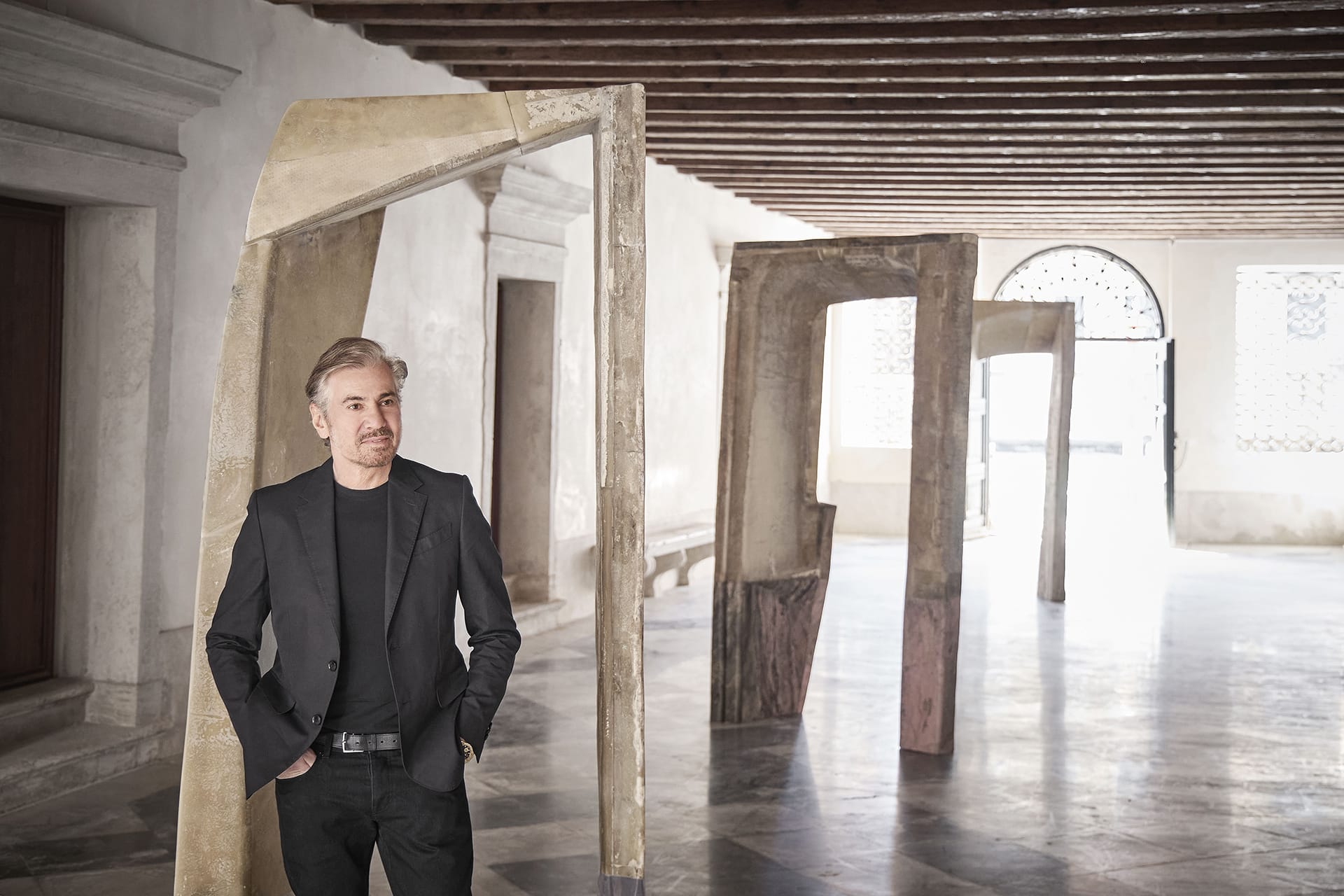Vincenzo De Cotiis Foundation Opens on Venice’s Grand Canal
Inside the scenic 15th-century Palazzo Giustinian Lolin, the celebrated architect and artist displays his groundbreaking work alongside visually compelling pieces by a mix of engaging talents

If the water door of the Palazzo Giustinian Lolin on Venice’s Grand Canal happens to be open, those passing by on vaporetti and boats will see a series of three arches. Stalking their way across the stone-flagged floor of the undercroft, these striking sculptures present as an awkward enfilade of jagged edges. They appear like ancient remains that have pushed their way up from the Lagoon, or leftovers from a long-ago biennale.
But in actuality, they are artworks by Vincenzo De Cotiis, the celebrated Italian architect and artist, and they herald the arrival of the Vincenzo De Cotiis Foundation in the 15th-century palazzo.

De Cotiis has made it his business to combine a number of histories in his works. From chairs that merge recycled fiberglass with fabulous marbles, to an art collection that mixes Renaissance bronzes with paintings by Hans Hartung and supersize sculptures by Anne Imhof, De Cotiis likes to play across space and time. The arches, called Archaeology of Consciousness, are assemblages of stone, fiberglass, marble, and—to mark their place in Venice—Murano glass.

The foundation, which is open by appointment, will produce publications and host public events, as well as exhibitions of designs and artworks by De Cotiis alongside pieces by other talents, displayed throughout the building’s palatial piano nobile. “It is a place where the convergence of design, art, and architecture can unfold,” says De Cotiis, a 2019 Galerie Creative Mind. “We wanted to find a space that resonated with our creative ideologies rather than one that offered conventional perfection.”
De Cotiis, however, has worked his usual magic on the interior (leased for a 25- to 30-year period, as is the way here), retaining significant existing details, losing some, and adding his own. “The biggest fight was over the removal of the curtains,” says his assistant, Jan, during a tour of the space. “They were great, thick pink- and red-silk brocade items, and considered historically important, so we had to remove, clean, and conserve them.” Until the end of the tenure, they will remain in a suitable storage.


Here, it can be hard to tell where the old ends and the freshly made begins. Off the main bedroom, a new bath is outfitted in a beautiful blue stone, rippled and crackled with yellow and white, that forms a perfect partnership with a ceiling where ancient blue paint is flaking and decaying to reveal grey and white beneath. A De Cotiis-designed wardrobe is inspired by Renaissance antecedents, though its massive fiberglass doors open to an illuminated interior. The custom-made bed sits on a plinth hand-painted in flowing lines that match the rippling water of the canal outside the window; mirrors are in antiqued glass; Murano chandeliers are several hundred years old, as are the early-18th-century allegorical wall paintings by Jean Raoux.


De Cotiis studied architecture in Venice. “Those years were transformative,” he says now. “They gave me a deep appreciation for the city’s architectural dialogue between decay and opulence. Its allure is not merely in its historical breadth, but in its daily sensory experiences—the way light dances on the water, the textures of ancient buildings that tell stories of time.”
True to this inspiration, De Cotiis’s work in recycled fiberglass tells the same story. He maintains its imperfections, in one console preserving a fungal growth on the surface that blooms like a deep-ocean flower beneath its lacquered finish. “The process of transforming reclaimed fiberglass into an aesthetic object reflects broader themes in my work of resurrection and transformation,” he says. His presence at the Palazzo Giustinian Lolin does just the same.
